Traditional loyalty programs are no longer enough to keep customers hooked. Today’s consumers expect more than just points and discounts—they crave personalized, meaningful experiences.
The secret? Data. When used right, data can help you transform and optimize your loyalty programs into powerful engagement engines that make customers feel truly valued.
In this article, we’ll dive deep into the fundamentals of data-driven loyalty programs, exploring how businesses can harness customer data to enhance retention, maximize revenue, and build lasting brand loyalty.
Let’s get into it!
Why Is Data Essential For A Successful Loyalty Program?

Data is the lifeblood of a successful loyalty program. Without it, businesses are just guessing—hoping their rewards and offers will stick- and the programs risk being generic and disconnected from what customers truly value.
The benefits of data-driven loyalty programs are substantial:
- Personalization: Data allows businesses to tailor rewards and offers to individual customer preferences. For example, if data shows that a customer frequently buys coffee, a loyalty program can offer a free cup of coffee after a certain number of purchases. This personal touch makes customers feel valued and increases the program’s appeal.
- Customer Insights: Data provides a window into customer behavior. Metrics like purchase frequency, average spend, and reward redemption rates reveal who the most loyal and valuable customers are.
- Continuous Optimization: A loyalty program isn’t static—it needs refinement to stay effective. Data enables real-time tracking of performance indicators such as engagement levels, retention rates, and return on investment (ROI).
- Targeted Marketing: With data, businesses can segment customers and deliver the right message at the right moment. High-value customers might receive exclusive offers, while those at risk of leaving could get a special incentive to return. In fact, 78% of marketers describe their customer engagement as data-driven.
In summary, incorporating data into loyalty programs is not just beneficial but essential for creating personalized, effective, and profitable customer engagement strategies.
Key Data Sources for Loyalty Programs
Here are the four primary data sources that fuel effective loyalty programs:
1. First-Party Data
First-party data refers to information directly collected from customers through brand-owned touchpoints, which is highly valuable due to its accuracy and relevance, as it reflects genuine customer behaviors and preferences.
Examples:
- Customer purchase history (products bought, frequency, spending amount).
- User profiles and preferences (demographics, interests, location).
- Email and SMS engagement (open rates, clicks, response behavior).
- In-app behavior (time spent, feature usage, loyalty points redemption).
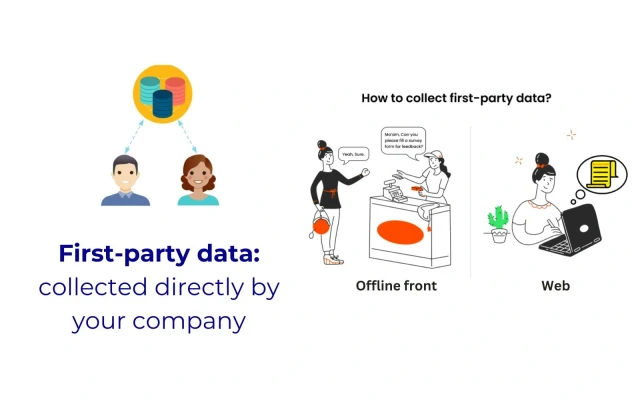
Benefits of having first-party data:
- Accuracy and reliability: You have direct control over the collection and quality of the data.
- Customer-centric insights: Provides valuable information about customer preferences, behaviors, and needs. According to Think With Google and Boston Consulting Group, companies that use first-party data for customer insights achieve 2.9X revenue growth compared to those that don’t.
- Personalization: Enables personalized communication, offers, and rewards.
Third-Party Data & External Integrations: Expanding the Customer View
Third-party data is collected from external providers or data aggregators to supplement first-party data, helping businesses gain a broader perspective.
Examples:
- Purchased audience segmentation reports.
- Demographic and psychographic insights from data brokers.
- E-commerce marketplaces and retail partnerships.
- Credit card transaction data from financial partners.
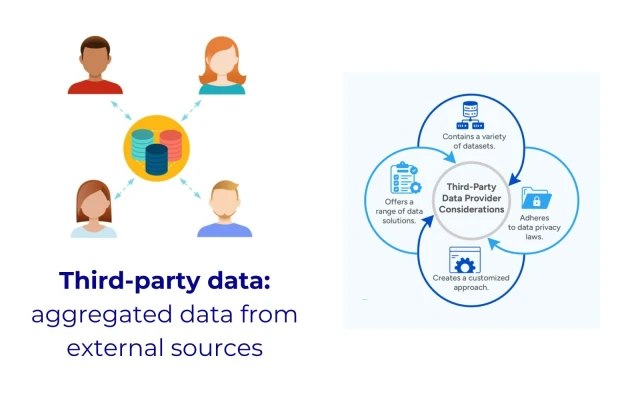
Integrating this data allows brands to
- Fill gaps in customer profiles when first-party data is limited.
- Cross-platform targeting by incorporating external behavioral patterns.
- Get competitor and industry insights to enhance loyalty strategies.
Behavioral data & predictive analytics: Anticipating Customer Needs
Behavioral data captures customers’ interactions and activities, which, when analyzed, can predict future behaviors and preferences. Leveraging tools to anticipate customer needs and tailor their strategies accordingly. For example:
- Website analytics: Tools like Google Analytics track user behavior on a site, such as navigation patterns and conversion rates, helping identify popular content and potential drop-off points.
- Social media monitoring: Analyzing engagement metrics on platforms like Facebook or Twitter provides insights into customer sentiments and trending topics, informing content strategies.
- AI predictive analytics: Predictive analytics uses AI to analyze past and present data, helping you predict future trends. When it comes to loyalty programs, predictive analytics helps you give the best experience to the right people at the right time, boosting revenue and profits.

It can also:
- Make marketing campaigns more effective
- Help you spend resources wisely
- Improve the customer experience
- Reduce the risk of customers canceling, downgrading, or needing discounts.
Feedback and sentiment data
Feedback and sentiment data involve collecting and analyzing customers’ opinions and emotions regarding a brand or its offerings. This qualitative data provides valuable insights into customer satisfaction and areas needing improvement.

It is usually derived from
- Customer surveys: Structured questionnaires gather specific feedback on products or services, helping identify strengths and weaknesses.
- Product reviews: Customer-written reviews on e-commerce platforms reflect individual experiences and satisfaction levels, guiding potential improvements.
- Social media sentiment analysis: Analyzing customer comments and discussions on social media platforms reveals public perception and emerging issues.
2 Brands Successfully Using Data To Optimize Their Loyalty Programs
Nike – Nike Membership & Nike Training Club
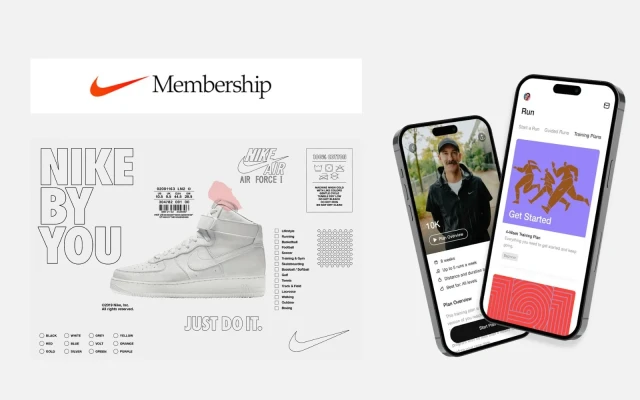
Nike, a worldwide sportswear giant, has adeptly harnessed data to refine its loyalty programs, notably through the Nike Membership and Nike Training Club initiatives.
Here’s how:
Nike Membership: Personalized Engagement and Exclusive Access
- Data-Driven Personalization: Nike collects and analyzes member data, including purchase history and browsing behavior, to offer tailored product recommendations and personalized content. The company also creates hyper-personalized campaigns that resonate with individual customers. For example, the Nike By You initiative allows customers to design their own shoes, reflecting Nike’s dedication to personalized experiences.
- Exclusive Member Benefits: Leveraging engagement data, Nike provides members with exclusive perks such as early access to new products, special promotions, and invitations to events. This strategy not only rewards loyal customers but also fosters a sense of belonging and exclusivity.
Nike Training Club (NTC) and Nike Run Club (NRC): Data-Enhanced Fitness Experiences
- Activity Tracking and Personalized Workouts: The NTC and NRC apps collect data on users’ workouts, including frequency, duration, and intensity via wearable devices. By analyzing this information, the apps deliver personalized training plans and workout recommendations that adapt to individual progress and goals. This customization enhances user engagement and effectiveness.
- Gamification and Community Engagement: Nike employs gamification elements, such as challenges and achievement badges, within the NRC app to motivate users. By analyzing user participation and performance data, Nike creates engaging experiences that encourage consistency and community interaction.
Huggies Rewards App
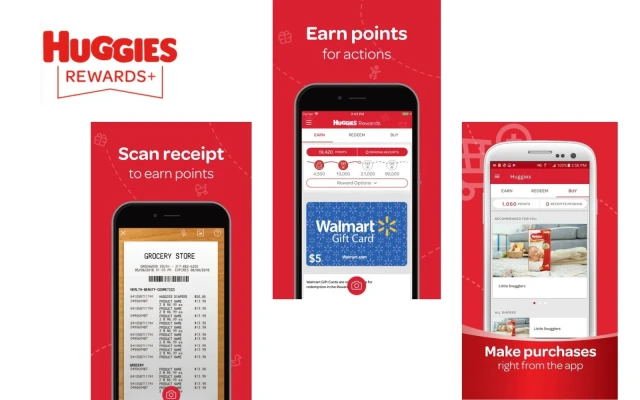
Huggies, a prominent brand in baby care products, has effectively leveraged data analytics to enhance its loyalty program, the Huggies Rewards App, which has yielded significant business growth.
- Receipt scanning: The app simplifies the process for parents to earn points by allowing them to scan and upload purchase receipts or link store loyalty cards directly within the app. This user-friendly feature has contributed to the app achieving a 5-star rating in the App Store, higher than competing apps.
- Customer segmentation: Huggies segments its customer base through the data collected from the app into categories such as VIP customers, frequent buyers, and lapsed users. It enables the delivery of personalized offers and content tailored to each group’s preferences and behaviors.
- Brand Interaction: Beyond purchasing activities, the app encourages deeper brand interaction by offering extra points for engaging with parenting articles and videos. This strategy not only provides valuable content to users but also strengthens the emotional connection between the brand and its customers.
Huggies experienced a 19% increase in newborn diaper sales, surpassing initial targets and successfully overtaking Pampers to become the leader in the Canadian diaper market. Additionally, the brand achieved three times the number of sign-ups within the first year of the campaign compared to previous rates.
How To Maximize Loyalty Program Success Using Data
Data is the key to making that happen. Here’s how brands can harness data to optimize every aspect of your loyalty program and build stronger customer relationships.
1. Personalize rewards and offers
Customers don’t just want discounts—they want rewards that feel relevant and exciting.
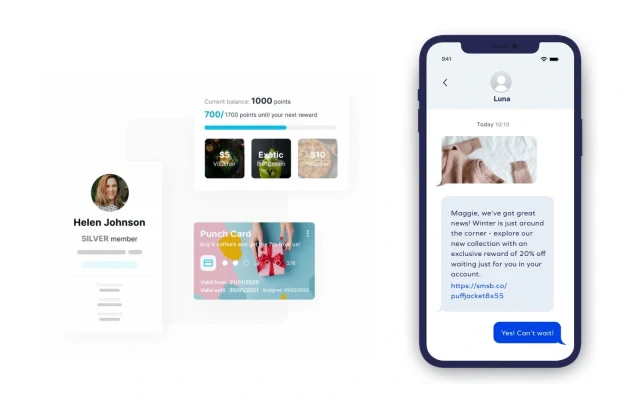
- Offer rewards that truly matter: Not all customers are motivated by the same things. Analyze purchase history, browsing patterns, and engagement trends to deliver rewards they actually care about. A frequent traveler? Offer flight upgrades. A coffee enthusiast? Double points on their favorite brew.
- Tailor promotions to individual behavior: Move beyond blanket discounts and send personalized offers based on past spending habits. If a customer frequently buys skincare products, offer an exclusive early access deal on a new sample serum.
- Acknowledge customer milestones: Celebrate key moments in their journey. A first purchase? A one-year anniversary? A major spending milestone? Recognizing these achievements with special offers makes customers feel valued and strengthens their emotional connection to your brand.
2. Optimize communication
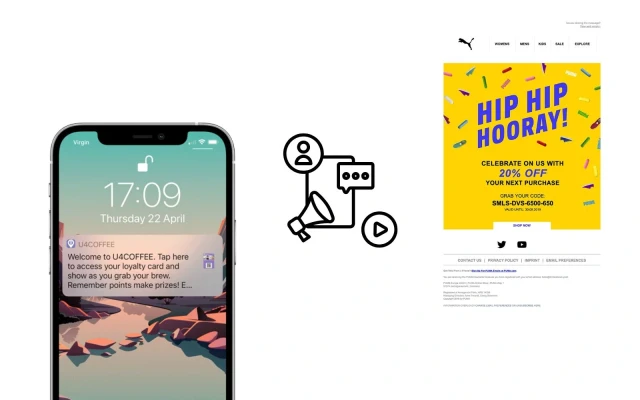
The most attractive reward means nothing if your customers never hear about it. Data-driven communication ensures your messages reach the right people at the right time through the right channels.
- Speak directly to your customers: A generic “Hey there!” email won’t cut it. Use customer data to personalize every message—whether it’s an email, SMS, or push notification—with their name, past purchases, and relevant offers.
- Find the perfect timing: Not everyone checks their inbox at the same time. Analyze behavioral patterns to determine when your audience is most likely to engage. A lunchtime push notification for a food delivery deal? A weekend email for a fashion sale? Precision matters.
- Meet them where they are: Some customers prefer emails; others respond better to in-app messages or even WhatsApp updates. Use data to respect their preferences and avoid overwhelming them with unwanted communication.
Yum Brands (Taco Bell & KFC) successfully boosted sales and reduced customer churn by using AI-driven marketing to determine the best timing for personalized email campaigns.
3. Optimize loyalty strategies
A loyalty program is never “set and forget.” Constant analysis helps fine-tune the experience, ensuring customers stay engaged and excited.
- Track what’s working—and what’s not: Monitoring redemption rates helps you understand which rewards customers value most. If a particular offer is underperforming, tweak it or replace it with something more compelling.
- Identify drop-off points: Are customers earning points but never redeeming them? Are they abandoning their carts before using a discount? Analyzing disengagement trends can uncover hidden friction points in your program.
- A/B test for continuous improvement: Experiment with different reward structures, messaging tones, and promotional strategies to see what drives the highest engagement. Even small tweaks—like changing email subject lines or adjusting point expiration rules—can have a significant impact.
4. Gamification: Make loyalty fun
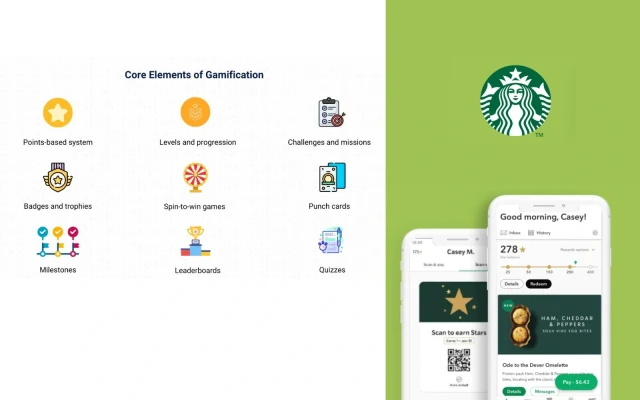
Loyalty shouldn’t feel like a chore—it should feel like a game worth playing. Gamification transforms engagement into an interactive experience that keeps customers coming back for more.
- Create challenges that drive action: Reward customers for completing fun challenges, like making three purchases in a week or referring a friend. The thrill of achievement keeps them motivated.
- Use leaderboards and friendly competition: People love a little friendly rivalry. Let them track their progress compared to other customers, unlocking exclusive rewards for top participants.
- Introduce tier-based rewards: Encourage long-term engagement by offering VIP perks at higher loyalty levels. The higher they climb, the more valuable their rewards become.
Starbucks’ Rewards program gamifies loyalty with bonus stars, personalized challenges, and limited-time boosts, keeping customers excited to engage.
💡 Read everything about Gamified Loyalty Program
Data Privacy & Compliance in Loyalty Programs
The collection and use of customer data within these programs necessitate a vigilant approach to data privacy and compliance, which is the biggest challenge for this aspect due to the growth of cybersecurity.
Ethical Data Collection & Transparency: Collecting customer data ethically is foundational to any loyalty program’s integrity. Key considerations include:
- Informed consent: Clearly communicate to customers what data is being collected and for what purposes. Avoid ambiguous language that could mislead or confuse.
- Data minimization: Only gather data that is essential for the functionality of the loyalty program. Extraneous data collection can lead to increased risks and potential breaches of trust.
- Transparency in data usage: Provide accessible information on how collected data will be used, stored, and shared. This openness allows customers to make informed decisions about their participation.
Implementing comprehensive privacy notices is crucial. These notices should inform customers about data collection practices, storage methods, usage, and sharing policies.
Key regulations (GDPR, CCPA): Compliance with data protection laws is non-negotiable for loyalty programs operating in various jurisdictions. Two prominent regulations are:
- General Data Protection Regulation (GDPR): Enforced in the European Union, GDPR mandates that organizations obtain explicit consent from individuals before collecting or processing their personal data. It also grants individuals the right to access, rectify, and erase their data.
- California Consumer Privacy Act (CCPA): Applicable to businesses in California, CCPA provides consumers with rights regarding the collection and sale of their personal information, including the right to opt-out and request deletion of their data.
Non-compliance with these regulations can result in substantial fines and damage to an organization’s reputation. Utilizing consent management platforms, such as Usercentrics, can assist in obtaining, managing, and documenting user consents.
Building customer trust through data protection: Trust is the cornerstone of any successful loyalty program. To cultivate and maintain this trust:
- Robust data security measures: Implement advanced security protocols to protect customer data from unauthorized access and breaches. Regularly update these measures to address emerging threats.
- Customer empowerment: Allow customers to control their data preferences, including opting out of data collection or choosing how their data is used. This empowerment demonstrates respect for their privacy.
- Ethical data practices: Avoid using customer data in ways that could be perceived as intrusive or unethical. Ensure that data usage aligns with the expectations set during data collection.
Risks of Over-Reliance on Data in Loyalty Programs
In the quest to enhance customer loyalty through data-driven strategies, it’s crucial to recognize and mitigate the potential risks associated with over-reliance on data.
1. Personalization aims to tailor experiences to individual preferences, but excessive personalization can cross into intrusiveness, leading to:
- Perception of surveillance: Over-personalization can make customers feel their behaviors are being overly monitored, leading to privacy concerns.
- Loss of serendipity: Excessive tailoring may eliminate the joy of discovery, making interactions predictable and less engaging.
- Boundary respect: It’s essential to respect personal boundaries and avoid assumptions that may not align with the customer’s self-perception.
2. Misinterpretation of customer data can lead to misguided strategies, impacting both customer satisfaction and business outcomes. It results in:
- Inaccurate targeting: Misunderstanding data patterns can result in irrelevant recommendations, diminishing the effectiveness of marketing efforts.
- Erosion of trust: Repeated inaccuracies can lead customers to question a company’s competence in handling their data, potentially driving them away.
- Operational inefficiencies: Resources may be wasted on strategies based on flawed data interpretations, affecting overall business performance.
3. While automation enhances efficiency, maintaining human elements in customer interactions is vital for building genuine relationships. Strategies to achieve this balance include:
- Hybrid support models: Combine automated systems for routine inquiries with human agents for complex issues, ensuring efficiency without sacrificing the personal touch.
- Personalized human engagement: Use data to inform human interactions, enabling staff to provide tailored support that resonates with customers.
- Customer autonomy: Allow customers to choose between automated services and human assistance based on their preferences and the nature of their needs.
Bottom Line
Data-driven loyalty programs are the future. Companies like Nike, Starbucks, and Huggies have already proven that harnessing first-party data, behavioral insights, and AI-driven analytics can turn loyalty programs into powerful growth engines.
The key is balance: personalize without intruding, automate without losing the human touch, and always prioritize trust and transparency. Now, if your business isn’t already leveraging data to enhance its loyalty program, now is the time to start.
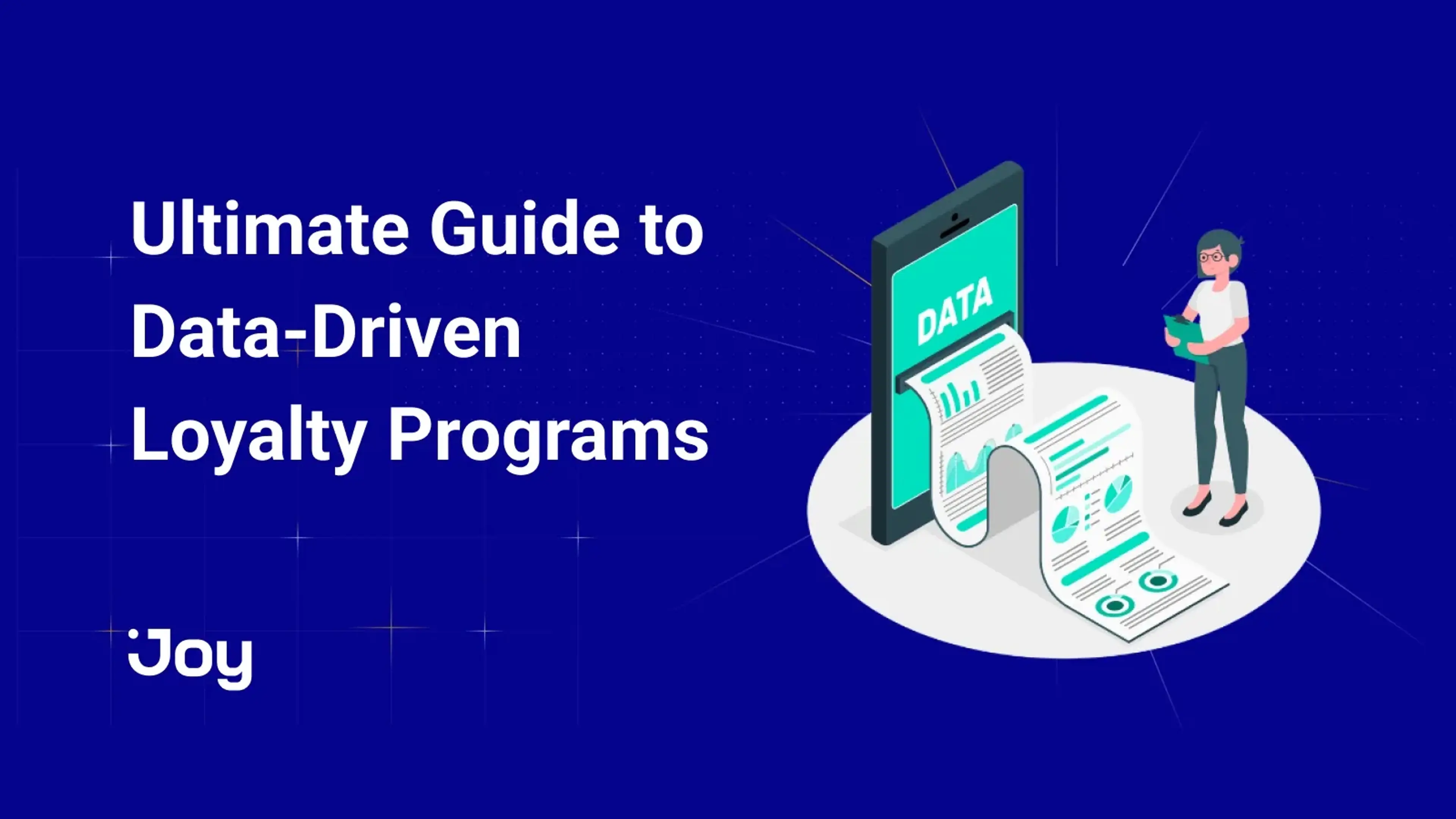

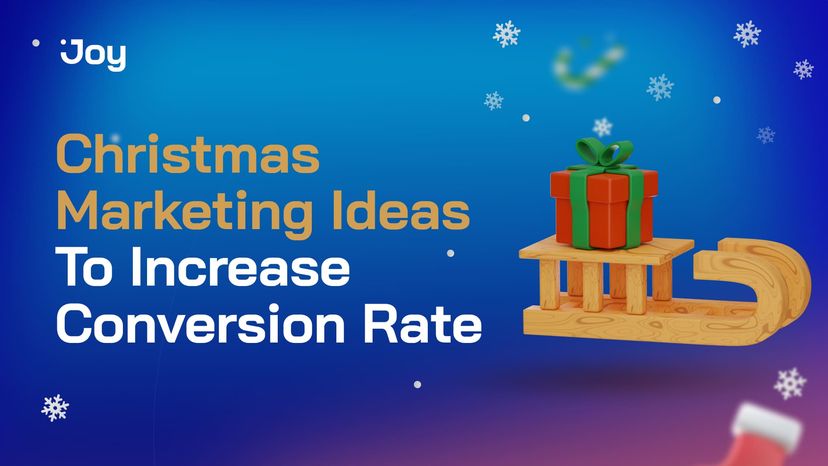

-a7e9a3.png?width=828&q=75&f=webp&auto=format)